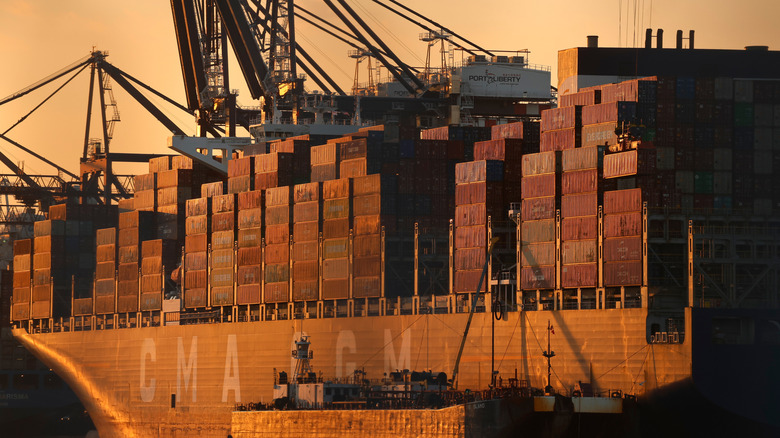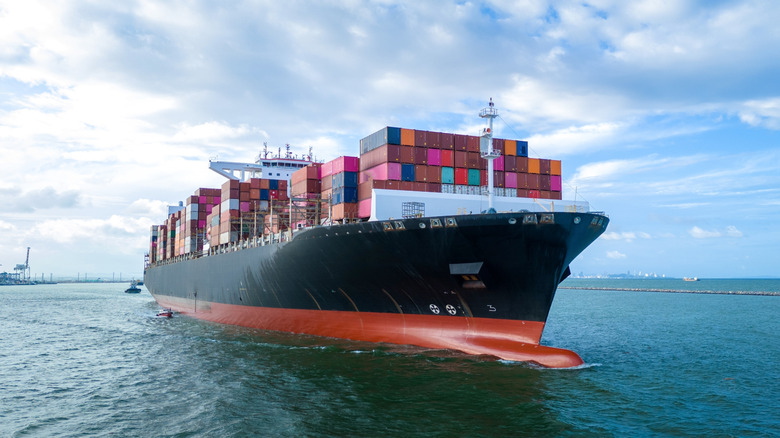
When the Ever Given became stuck in the Suez Canal in 2021, the BBC reported, it prevented approximately 12% of the world's trade from passing through. The Ever Given itself had a capacity for 20,000 containers. There's a vital distinction to be drawn, though, between simply having room for all these containers and being able to store them all safely and securely so they reach their destination. For the sake of safety and profitability alike, then, cargo ship operators ensure that the goods on board
are secured.
Perhaps the most important containers in a stack, when it comes to the stability of the whole, are the ones on the bottom. Efforts start here with lashing rods. These are lengths of metal that hold containers in place, often the lower ones in a stack, connecting to small raised sections of the ship's deck through small holes. Shipping containers are designed to slot together and come in standard sizes for the specific use case in question, as determined by the International Organization For Standardization, and an awful lot of them can fit on a container ship.
Twist locks are also employed to secure shipping containers. In a typical model, the locking head is affixed to the first container, with the pointed head passing into the hole on the next container. They are then manually locked together. These are broadly used solutions for securing goods on cargo ships, adaptable to best suit specific vessels' individual needs.
Read more: What Engines Are In The SS United States?
Other Ways Cargo Ships Organize And Secure Their Shipping Containers

It's inevitable that some shipping containers will, sometimes, fall overboard, but there are plenty of measures taken to reduce that risk as much as possible. To the untrained eye, a fully-laden cargo ship may look as though they've simply packed as much as they can onto the vessel, however it'll fit, but the cargo of these enormous vessels is arranged with stability in mind. Heavier containers are generally stored lower on a stack, which allows them to bear more weight while not compromising the balance of the cargo ship itself. The whole stack can be further secured by a system of turnbuckles, which uses tension to hold containers in place.
The hold of a vessel will typically be secured by hatch covers, and the cargo therein can be further balanced by means of stacking cones. They have a very similar function to twist locks, but the intent here is to keep a stack level. More broadly, this balance can be supported by keeping multiple stacks braced against each other, perhaps using bridges. One of the most important ways cargo ships can keep their cargo safe is by ensuring their route doesn't jeopardize it.
The BBC noted in July 2022, for example, that the Pacific Ocean is particularly dangerous for the biggest cargo vessels because of its extreme conditions. Some cargo ships can cross the Pacific rather quickly, though. Stavros Karamperidis, of the University of Plymouth's Maritime Transport Research Group, told the outlet, "... the [ultra large] vessels come near the coast, so they don't face big waves. It's a matter of stability."
Want the latest in tech and auto trends? Subscribe to our free newsletter for the latest headlines, expert guides, and how-to tips, one email at a time.
Read the original article on SlashGear.











